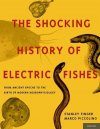About this book
This book looks at how three kinds of strongly electric fishes literally became "electrical", and how they helped to change the sciences and medicine. These fishes are the flat torpedo rays common to the Mediterranean, the electric catfishes of Africa, and an "eel" from South America. The discovery of the electrical nature of these fishes in the second half of the 18th century was the starting point of the two fundamental advances in the sciences: on the physiological side, the demonstration that nerve conduction and muscle excitation are electrical phenomena, and on the physical side, the invention of the electric battery. Starting with catfish tomb drawings from Ancient Egypt and colorful descriptions of torpedoes from the Classical Era, the authors show how these fishes were both fascinating and mysterious to the ancients. After all, not only could they produce torpor and temporary numbness when touched, they could stun through intermediaries, such as wet nets and spears.
From beginning to end, this drama is firmly anchored in the philosophy and science of the day. Moreover, with biographical information about the key players, readers can fully appreciate what they were thinking as they tried to understand one of Nature's greatest puzzles - a mystery that would transform nerve and muscle physiology in ways that earlier generations could not have anticipated. Although a scholarly volume, the book's style is generally narrative and, with its hundreds of magnificent illustrations, it should appeal to a large audience.
Contents
PART I: INTRODUCTION
1- The Allure of Electric Fishes: Humboldt's Obsession
PART II: ANCIENT CULTURES
2- The Shocking Catfish of the Nile
3- Torpedoes in the Greco-Roman World:
Pt. 1. Wonders of Nature Between Science and Myth
4- Torpedoes in the Greco-Roman World:
Pt. 2. From Therapeutic Shocks to Theories of the Discharge
5- Byzantine and Islamic Writings
PART III: MIDDLE AGES TO THE EARLY MODERN PERIOD
6- Torpedoes: From the Scholastics through the Renaissance
7- Rediscovering The Torporific Catfishes
8- The "Eels" of South America
9- From the Occult to Mechanical Theories of the Discharge
PART IV: THE EMERGENCE OF FISH ELECTRICITY
10- The Electrical World of Benjamin Franklin
11- Animal Spirits and Physiology
12- First Steps Toward Fish Electricity
13- The Dutch, the Eel, and Electricity
PART V: THE ROYAL SOCIETY AND THE COVETED SPARK
14- Edward Bancroft's Guiana Eels and London Connections
15- John Walsh's Scientific Journey
16- The Royal Society and Interdisciplinary Science
17- Out of the Guianas: The American Philosophical Society and the Eel
18- Alexander Garden: A Linnaean in South Carolina and Captain Banker's Eels
19- Sparks in Darkness and the Eel's Electrical Sense
20- Public Knowledge: Newspapers, Magazines, and "Shocking" Poetry
PART VI: FROM FISH TO NERVE PHYSIOLOGY AND BACK
21- Galvani's Animal Electricity
22- Electric Fishes in Volta's Path to the Battery
23- Galvanism Contra "Voltaism": Electric Fishes and the "Unsolvable" Dilemma
24- Electric Fishes in the Nineteenth Century
25- The Changing Neurohysiological Setting
26- Understanding the Shock Mechanisms: A Twentieth Century Odyssey
Epilogue
Appendix I: Names with Birth and Death Dates
References
Customer Reviews
Biography
Stanley Finger is Professor of Psychology, Neuroscience, and Philosophy-Neuroscience-Psychology at Washington University, St. Louis, MO.
Marco Piccolino is Professor of General Physiology and Lecturer in Science History, University of Ferrara, Italy.














![Die Vogel-WG: Die Heinroths, ihre 1000 Vögel und die Anfänge der Verhaltensforschung [The Bird Wohngemeinschaft: The Heinroths, Their 1000 Birds and the Beginnings of Behavioral Research]](http://mediacdn.nhbs.com/jackets/jackets_resizer_medium/26/267983.jpg?height=150&width=107)



















